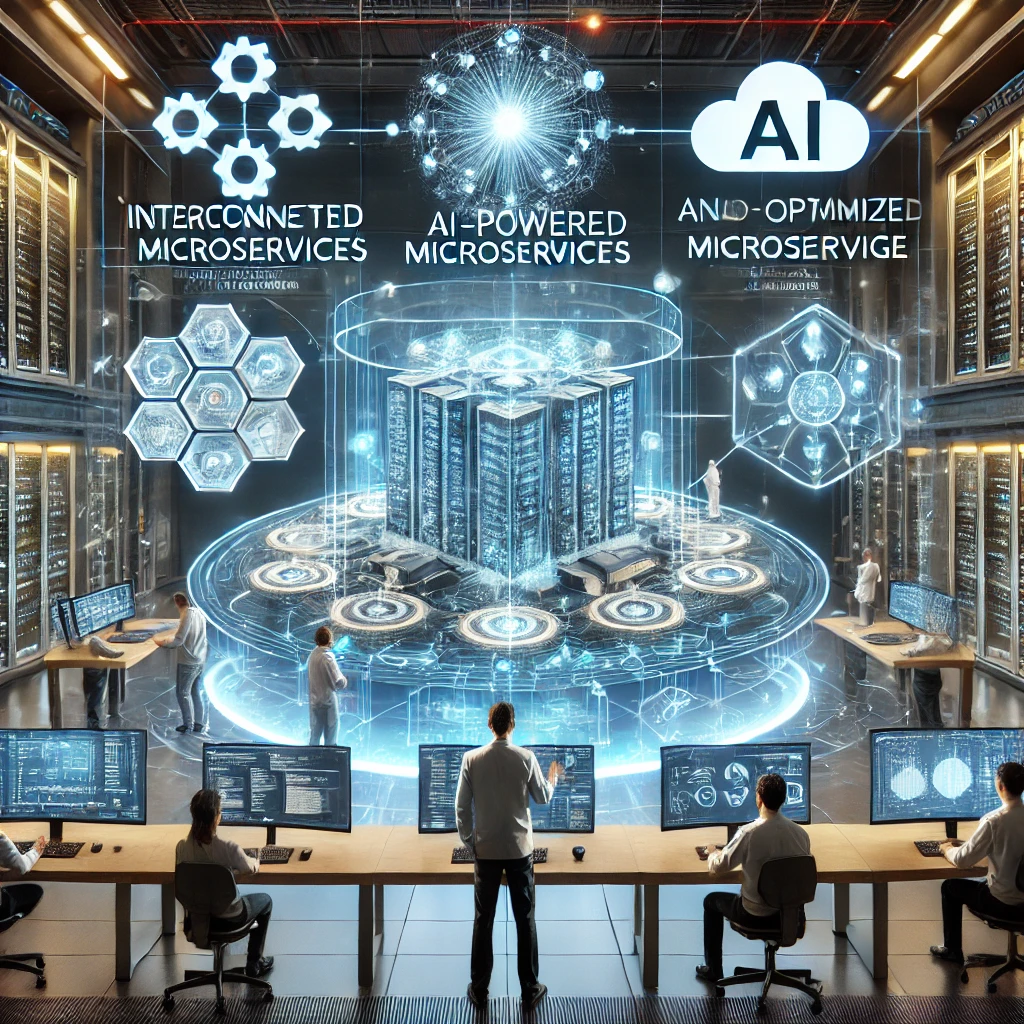Application of AI in microservices: Smarter service decomposition and optimization
Beyond service decomposition, AI is playing a critical role in enhancing the scalability and performance of microservices-based applications. Managing distributed transactions, optimizing resource allocation, and predicting system loads are crucial for ensuring smooth operations in microservices environments.

Designing microservices architectures is a complex task, requiring precise service decomposition, efficient communication between services, and robust security measures. Recent advancements in Artificial Intelligence (AI), including machine learning (ML) and natural language processing (NLP), are revolutionizing microservices design by automating critical processes and optimizing architectural decisions.
A systematic literature review on AI-driven microservices reveals how AI-powered tools streamline service decomposition, improve scalability, and mitigate architectural complexities. The findings highlight the immense potential of AI in transforming how microservices are developed, deployed, and managed, paving the way for more resilient and adaptive software systems.
The review titled "Designing Microservices Using AI: A Systematic Literature Review" is published in Software.
AI-driven service decomposition: Automating architectural complexity
One of the most intricate aspects of microservices design is service decomposition—determining how to split a monolithic application into well-defined, loosely coupled services. Traditional methodologies like Domain-Driven Design (DDD) provide theoretical frameworks, but their practical implementation often requires extensive manual effort. AI-driven approaches, such as clustering algorithms and NLP techniques, are automating this process by analyzing software artifacts, identifying logical service boundaries, and reducing unnecessary interdependencies.
Tools like Mono2Micro, SEMGROMI, and GreenMicro leverage AI to analyze user stories, database schemas, and source code, helping developers define optimal microservices boundaries. Clustering algorithms, such as k-means and hierarchical clustering, process large datasets to identify latent service structures, ensuring better modularity. Additionally, Natural Language Processing (NLP) techniques extract meaningful insights from documentation and user requirements, allowing for automated mapping of functionalities into discrete services.
While these AI-based solutions enhance efficiency, challenges persist. AI models depend on high-quality training data, and ambiguous or incomplete textual requirements can lead to inaccurate service boundaries. Moreover, AI-generated microservices architectures require continuous refinement and validation to align with evolving business needs. Despite these challenges, AI-powered service decomposition is proving to be a game-changer in accelerating the microservices adoption process.
Scalability and performance optimization of microservices through AI
Beyond service decomposition, AI is playing a critical role in enhancing the scalability and performance of microservices-based applications. Managing distributed transactions, optimizing resource allocation, and predicting system loads are crucial for ensuring smooth operations in microservices environments. AI-driven autoscaling techniques and predictive analytics are helping developers maintain optimal system performance with minimal manual intervention.
Machine learning models, including reinforcement learning and deep learning, are being integrated into microservices infrastructure to enable dynamic scaling based on real-time traffic patterns. AI-powered autoscalers, such as the Waterfall model, optimize resource allocation by predicting workload spikes and dynamically adjusting compute resources. These predictive models ensure that services scale up or down efficiently, preventing resource wastage and reducing infrastructure costs.
Furthermore, AI is improving fault tolerance and anomaly detection in microservices environments. By leveraging graph-based AI models and Bayesian Networks, microservices can automatically identify bottlenecks and mitigate failures before they impact system performance. The integration of AI in microservices observability tools allows for real-time monitoring, ensuring early detection of issues related to latency, memory consumption, and API failures.
However, AI-driven performance optimization is not without limitations. Predictive models require extensive historical data to make accurate forecasts, and sudden, unpredictable traffic spikes can still pose challenges. Additionally, AI-based scaling solutions must be carefully tuned to avoid over-provisioning or under-utilization of resources. Despite these hurdles, AI is proving to be a vital tool in enhancing the efficiency, reliability, and cost-effectiveness of microservices architectures.
AI-powered decision-making in microservices architecture
Architectural decision-making in microservices involves selecting appropriate communication protocols, defining API gateways, and determining security policies. Traditionally, these decisions have relied on manual expertise and experience, but AI is now enabling data-driven, automated decision-making. Generative AI models and knowledge graphs are being employed to assist architects in making informed choices, reducing the complexity of microservices deployment.
Large Language Models (LLMs) are playing a key role in automating architectural recommendations. AI-powered tools analyze previous design patterns, performance metrics, and best practices to generate optimal microservices configurations. For instance, AI can suggest whether an event-driven architecture or a REST-based communication model is more suitable for a given application, ensuring better interoperability and system efficiency.
Moreover, AI is assisting in security enforcement and compliance monitoring. AI-based intrusion detection systems and anomaly detection algorithms are helping organizations identify vulnerabilities and proactively mitigate security threats in microservices environments. By continuously learning from attack patterns, these systems enhance the resilience of microservices against cyber threats.
Despite its advantages, AI-driven decision-making must be interpretable and explainable to gain trust among software architects. AI-generated recommendations should be transparent, allowing developers to validate and fine-tune architectural decisions. Future advancements in AI explainability and regulatory compliance will be crucial in ensuring that AI-driven microservices architectures remain both effective and accountable.
Future of AI in microservices: Emerging trends and challenges
As AI continues to evolve, its role in microservices design will expand further. Emerging trends such as self-adaptive microservices, AI-driven API management, and automated compliance enforcement are set to redefine the industry. Federated learning models are being explored to enable privacy-preserving AI-driven microservices, ensuring that organizations can leverage AI without compromising data security.
However, several challenges need to be addressed to fully realize AI's potential in microservices. AI model biases, lack of standardization, and integration complexities remain significant barriers. The industry must work towards developing standardized AI frameworks for microservices, ensuring seamless interoperability across platforms. Additionally, balancing AI automation with human oversight is critical to maintaining ethical AI deployment in software architecture.
Despite these challenges, AI offers promising solutions in microservices design, providing automation, scalability, and intelligent decision-making capabilities.
- FIRST PUBLISHED IN:
- Devdiscourse










